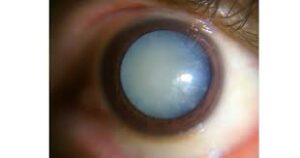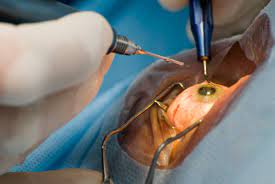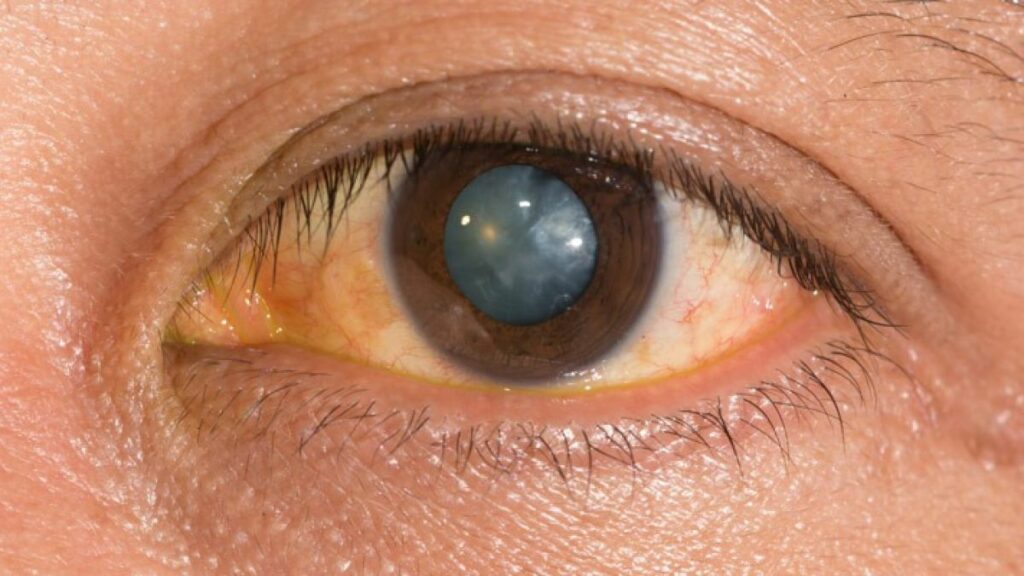Senile cataract is a type of cataract which is found in elderly people. It is generally a slower-growing type of cataract and often becomes more severe over time. Senile cataracts are usually treated with laser surgery, but may also require other treatments, such as lens implants or intravitreal antibiotics.
Contents
What is a Senile Cataract?

A senile cataract is a type of cataract that is caused by aging. It is the most common type of cataract and affects about 60 percent of people over 80 years old. Senile cataracts often develop slowly over many years, and may not cause any signs or symptoms until they are quite advanced. The affected eye can become blurry and light-sensitive, and vision may gradually decline. Senile cataracts are treated with surgery to remove the lens.
Senile cataracts are also known as old-age cataracts or senile lens opacities. Also called cataract of senility, senile lens, senile cataract, senile opacity, and opacified lens of senility, this condition is a type of cataract that is caused by increasing age. Many times senile cataracts may not cause any signs or symptoms until they are quite advanced.
What are The Symptoms of Senile Cataracts?

Possible signs of senile cataracts include the following:
the gradual decrease in vision over time
One of the most common signs of senile cataracts is a gradual decrease in vision over time. This can occur as the lens inside the eye begins to lose its ability to focus light on the retina, which leads to blurry or even blind vision. The gradual deterioration of vision may not be noticeable at first, but it can lead to decreased mobility and difficulty performing everyday tasks.
Constant complaints about poor vision
Another common sign of senile cataracts is constant complaints about poor vision. This may be due to the gradual loss of clarity and sharpness in vision, as well as changes in contrast and color. Those with senile cataracts may feel as if they need to wear glasses all the time even though their vision has not worsened.
Eye pain or discomfort
Senile cataracts can also cause eye pain or discomfort. This can be due to the changes in lens function that cause blurred vision, or the increased pressure inside the eye that can lead to headaches and other symptoms. The discomfort also makes it difficult to stay awake or concentrate, so those with senile cataracts may find it difficult to do basic tasks such as reading or working on a computer.
Difficulty seeing in bright light
Another sign of senile cataracts is difficulty seeing in bright light. This may be due to the gradual decline in the amount of light that can reach the retina, which can cause headaches and increased sensitivity to light. Those with senile cataracts may also find it difficult to see in outdoor settings or during evening activities.
Constant eye fatigue
Finally, those with senile cataracts may experience constant eye fatigue. This can be due to the changes in lens function that cause blurred vision, as well as the increased pressure inside the eye that can lead to headaches and other symptoms. Constant eye fatigue can also make it difficult to stay awake or concentrate, which can impact daily life activities.
Reasons for Senile Cataract
![]()
![]() There are certain reasons why a person may develop senile cataracts. These can include age, genetics, and lifestyle choices. Some of the most common causes of senile cataracts are:
There are certain reasons why a person may develop senile cataracts. These can include age, genetics, and lifestyle choices. Some of the most common causes of senile cataracts are:
Age
One of the most common reasons for senile cataracts is age. The lenses in the eyes become less elastic and tend to become more brittle as people age. This can lead to the buildup of protein in the lens, which can eventually cause the lens to fall out. Age also increases the risk for other conditions, such as diabetes and heart disease, that can also lead to cataracts.
Genetics
Senile cataracts are also sometimes hereditary. This means that the condition may be passed down from one parent to their children. In some cases, senile cataracts may develop due to an underlying genetic condition, such as age-related macular degeneration (AMD).
Lifestyle choices
Other lifestyle choices that can increase the risk of senile cataracts include smoking cigarettes and using excessive amounts of alcohol. Both of these habits can damage the lens and lead to the development of senile cataracts. Additionally, obesity is another common cause of senile cataracts and can lead to several other health problems.
Some of these lifestyle choices, such as smoking and excessive drinking, can also lead to other conditions, such as heart disease and diabetes, that can also cause cataracts.
How is Senile Cataract Diagnosed?
Most people who live with a senile cataract may not even know they have it. This type of cataract is formed when the lens of your eye becomes cloudy and hard to see through. The lens is responsible for focusing images onto the retina, which sends them to your brain. As a result, people with senile cataracts may have difficulty reading, driving, and other activities that require good visual clarity.
There are a few ways to diagnose senile cataracts. One is to perform a physical exam and ask the person about their symptoms. If you’re concerned about someone’s vision and think they might have senile cataracts, you can also order a CT or MRI scan to confirm the diagnosis.
The diagnosis may be confirmed by several tests, including:
CT or MRI scan: This is the most detailed way to diagnose senile cataracts. It can show if the lens is cloudy and if there are any other problems with the eye.
Visual field test: This test measures how well someone sees in both the near and far ranges. It can be used to check for changes in vision due to senile cataracts.
Glaucoma test: A glaucoma test checks for changes in pressure within the eye that may be associated with senile cataracts.
Chemical analysis of tears: This test looks for signs of eye disease, including cataracts, by analyzing tears that are shed during a visual exam.
What are The Treatment Options for Senile Cataracts?

There are a few different treatment options for senile cataracts. Some of these are:
Surgery
One of the most common treatment options for senile cataracts is surgery. This can involve removing the cataract with a surgical procedure. There are a few different types of surgical procedures that can be used to remove senile cataracts.
Some of the most common surgical procedures used to remove senile cataracts are:
Laser surgery
In laser surgery, a laser is used to destroy the lens inside of the eye. This is a relatively new and more advanced treatment option for senile cataracts. Laser surgery is often more effective than other treatments and it is minimally invasive.
However, laser surgery has some risks. These risks include potential damage to eyesight, pain, and infection. Additionally, laser surgery may not be available in some areas.
Surgery with a glass lens implant
Another surgical option for removing senile cataracts is surgery with a glass lens implant. This type of surgery involves replacing the lens inside of the eye with a glass lens. This is a less invasive treatment option than laser surgery and it has fewer risks associated with it. However, this type of surgery may not be available in all areas. Additionally, this procedure may not be as effective as other treatments for removing senile cataracts.
Can You Prevent Senile Cataracts?

A senile cataract is a common form of cataract that develops in older adults. It is the most common type of cataract, affecting about half of all people over age 80. The senile cataract is caused by the build-up of fluid and cholesterol in the lens of the eye. Over time, this can cause the lens to become clouded and eventually fall out (tear).
There is no definitive way to prevent the development of senile cataracts. However, there are several things you can do to reduce your risk:
Keep your eyes healthy by practicing good eye care habits, including regular eye exams and wearing sunglasses when sun exposure is necessary. Exposure of the lens to the sun can damage the lens and increase your risk of developing senile cataracts.
Eat a healthy diet. Include plenty of fiber, vitamins, and minerals in your diet to help keep your body healthy. A healthy diet can also help reduce your risk of developing other health problems, such as heart disease, stroke, or cancer.
Control blood pressure. High blood pressure can lead to the development of cataracts. Some of the ways you can control your blood pressure include quitting smoking, staying physically active, and managing your weight.
These are some of the ways to prevent senile cataracts and other age-related eye problems. If you are experiencing vision problems in your older years, be sure to talk to your doctor. He or she may be able to provide you with the resources you need to stay as healthy as possible and reduce your risk of developing senile cataracts.
Conclusion
The senile cataract is a very common type of cataract, and it can be quite serious. If you are over the age of 60 and experience any of the following signs or symptoms, you should see a doctor immediately: sudden vision changes, blurry vision that gets worse in bright light or when you move your head quickly, eye pain, difficulty seeing at night, or decreased ability to read. The good news is that there are treatments available for this condition, and if caught early enough it can usually be treated successfully. So if you are experiencing any of these signs or symptoms, please do not hesitate to go see your doctor.
Cataract surgery is a safe and painless procedure. At MantraCare we have a team of experienced eye surgeons, who will be happy to answer any questions on cataract surgery. Call us at +91-9711116605 for any inquiries.
